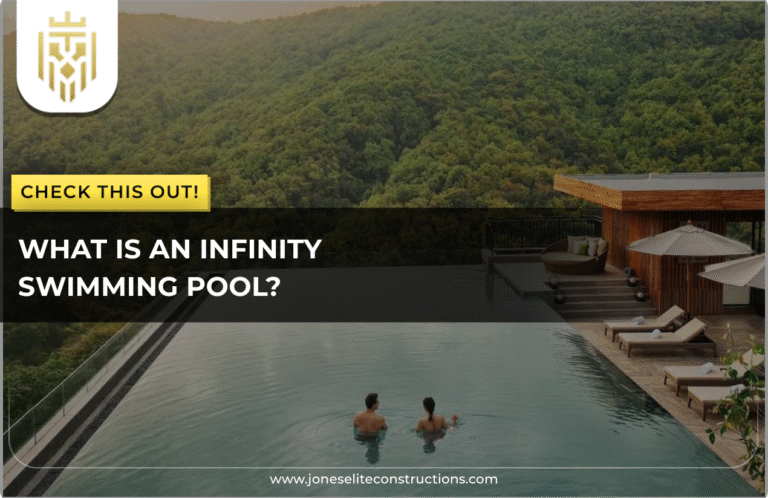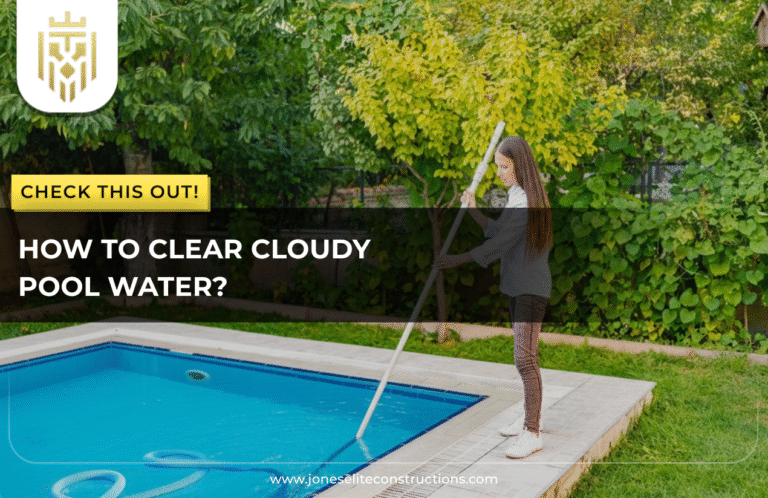What is Pool Winterization?
Pool winterization is preparing your swimming pool for the cold months when it will not receive any application. It comprises a series of steps such as cleaning thoroughly, balancing water chemistry, lowering water levels, draining pool equipment and plumbing lines, adding winterizing chemicals, and covering the pool securely.
All these steps safeguard against frost damage, protect pool parts, and keep the water clean in the off-season. Whether in ground or above ground, a winterization procedure assures an easier and safer reopening rejoicing with bright weather.
Why Winterizing Your Pool Is Important

Before the chill of winter sets in, it’s essential to understand why winterizing your pool isn’t just an optional maintenance step—it’s necessary for long-term care.
Prevents Structural Damage
The gist here is that ice damages pools just by the pressure of expansion. Bergeson winters can render your tiles into a fine jigsaw that will most definitely wear on your pool liner or completely fracture the pool walls. Winterizing will minimize any ice-related damage that can be expensive to fix come springtime.
Protects Pool Equipment
Pump, filter, and heater may suffer from all kinds of damages if not freed of water and recuperated during winter; plumbing lines having a similar fate. Winterizing simply makes sure water gets out of these components, hence lengthening their lifespan and eschewing a costly replacement.
Maintains Water Quality
Untreated pool water can sit for weeks on end, giving algae and bacteria an excellent environment in which to thrive. Treating with winterizing chemicals and sealing will make water quality better and reopen easier in spring.
How to Winterize different types of pools
Winterizing an in-ground pool involves several careful steps to protect the structure and its equipment from harsh winter conditions. Proper preparation helps avoid costly repairs and ensures a smooth reopening in spring.
How to Winterize an In-ground Pool

Clean the Pool Thoroughly
Start by taking away leaves, dirt, and debris from the water and pool surfaces. Use a pool vacuum or skimmer net to get the pool as clean as possible.
Test and Balance the Water
Check for pH, alkalinity, and calcium hardness. You want to keep pH between 7.2 and 7.6 and have everything balanced so when the pool goes into winter there won’t be any scale build-up or corrosion.
Shock the Pool
Chlorine shock kills off any remaining bacteria or algae, so this must be done next. The pump should run for 24 hours after application to ensure the chemicals are well distributed.
Add Winterizing Chemicals
When the water is clear and balanced, add winterizing chemicals. These include algaecide, scale inhibitors, and pool enzymes.
Lower the Water Level
Lowering the water below the skimmer line so that it cannot overflow and freeze to damage. Exact position depends on the pool type and cover.
Drain Pool Equipment
Drain water from the pump, heater, filter, and any attached plumbing. Store removable components indoors if possible, and blow out the lines using an air compressor to eliminate any remaining water.
Cover the Pool
Finally, install a durable winter pool cover to protect against debris and snowfall. Ensure the cover is tightly secured to keep it from shifting or tearing.
How to Winterise an Above Ground Pool

Winterizing an above ground pool is essential to maintain the pool’s condition through freezing temperatures. With the right precautions, you can prevent damage to the liner, frame, and plumbing while keeping the water clean and balanced during the off-season.
Clean the Pool
Use a skimmer and a vacuum to remove any dirt, leaves, and floating debris from the surface of the pool. Scrub the walls and the floor to make sure algae do not build up during winter.
Balance the Water Chemistry
Test and correct the water chemistry to recommended winter levels; a good pH, alkalinity, and calcium hardness are necessary to protect pool liners and equipment.
Add Winterizing Chemicals
Add winterizing chemicals (chlorine shock, algaecide, and metal sequestration) to keep the pool from being contaminated or stained.
Lower the Water Level
Drain the water so it sits below the skimmer. This prevents the skimmer and return lines from freezing and cracking.
Drain and Store Equipment
Drain hoses, pumps, and filters. Wash and dry everything before storing in a dry, frost-free location to avoid damage.
Install an Air Pillow
Position an air pillow at the center of the pool to absorb ice expansion and relieve pressure on the pool walls and cover.
Cover the Pool Securely
Cover and protect the pool with a high-quality winter cover, all the way tightly sealed to prevent the wind from tearing it away or heavy snow from pushing it down.
Tips for All Pool Types
No matter the type of pool you have, these general winterizing tips apply across the board for added protection.
Winterize Before the First Freeze
Timing is crucial. Some late nights are chilly but not hard enough to freeze; you will want to complete all the hard work in winterizing before the nighttime temperature remains below freezing more than a few nights at a stretch.
Use Non-Toxic Pool Antifreeze
In all your plumbing lines apply pool-antifreeze to protect the pipes from any kind of freeze damage, more so if you reside in a very cold region.
Check the Cover Regularly
Periodically check throughout the winter to be sure the cover has not shifted, ripped, or accumulated a large amount of debris or snow.
Remove All Organic Debris
Any leaves, branches, or dirt on top of your cover or near the pool can contribute to the formation of algae and staining when the pool is reopened.
Keep an Eye on Water Levels
Watch the water level regularly underneath the cover, and add or remove water so as not to cause any damage to the cover or the structure.
FAQs
1) What is Pool Winterization?
Pool winterization is the process of preparing your swimming pool for winter. This involves cleaning, chemical balancing, draining equipment, and covering the pool to prevent freeze damage.
2) How to Winterize an In-ground Pool?
The proper way to winterize an in-ground pool is to do a thorough cleaning, balance the water, shock, add winter chemicals, lower levels of water, drain equipment, and cover the pool with a safety cover.
3) How to Winterize an Above Ground Pool?
Winterizing includes cleaning the pool, balancing chemicals, installing a winterizing kit, lowering water levels, draining and storing all equipment, installing an air pillow, and securing the cover.
4) Why Is Winterizing Your Pool Important?
It prevents freeze damage to the surface, protects equipment from freezing, and at the same time, keeps water quality good and helps in keeping the pool opening process in smooth condition come spring.









